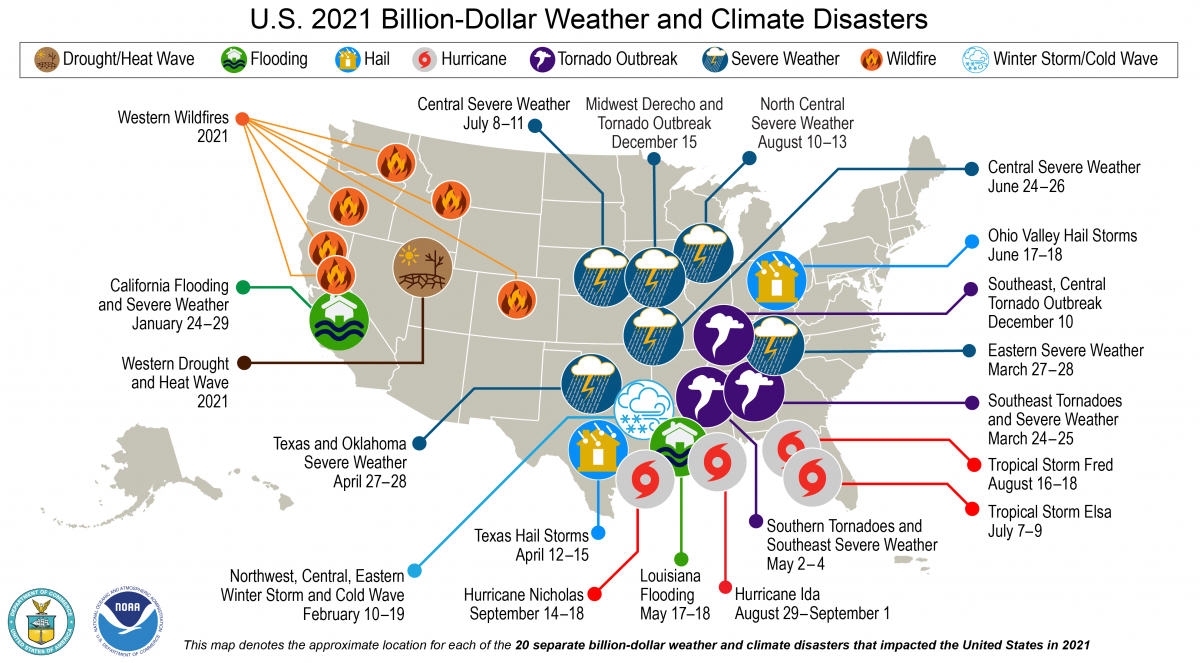The National Centers for Environmental Information (NCEI) released its 2021 Billion-Dollar Weather and Climate Disasters Report. The report uses inflation-adjusted financial data to assess weather and climate-related disasters that pass the billion-dollar damage threshold. The Billion-Dollar Weather and Climate Disasters tool is a useful resource to view the frequency and costs of these events since 1980 across the U.S. and monitor how natural disasters have affected people’s lives and property over time. In 2021, 20 different billion-dollar weather and climate disasters affected the U.S., ranking as the second-highest year in frequency of these events. 2020 holds the record with 22 various billion-dollar disasters. The cost of damages from these events in 2021 was approximately $145 billion. The report also highlights the increasing trend in billion-dollar weather and climate disasters, attributing this to increased exposure and vulnerability to these hazards and an increase in some types of these events due to climate change. According to NCEI, there are “hints that the extremely high activity of recent years is becoming the new normal.”
The report mentioned that since 1980, “the south, central, and southeast regions of the U.S.… have suffered the highest cumulative damage costs, reflecting the severity and widespread vulnerability of those regions to a variety of weather and climate events,” showing just how vulnerable the SCIPP region is to these natural disasters. In 2021, our region was affected by 13 billion-dollar weather and climate disasters, including the two costliest disasters in the U.S. Category 4 Hurricane Ida greatly affected Louisiana and caused approximately $75 billion in damages, in which some of this was from extensive flooding in the Northeast U.S. as the tropical remnants merged with an additional weather system. The February cold wave caused $24 billion in damages across a large swath of the U.S., but extensive damage and power outages occurred in our region. SCIPP’s own Darrian Bertrand and Simone Speizer wrote a report summarizing the impacts of this February cold wave to the SCIPP region, which is available here.
Information in this report underscores the need for organizations like SCIPP, which assist organizations in the south-central U.S. with making decisions that build resilience and reduce weather and climate risks and impacts. As one of the nation’s most vulnerable and natural disaster-prone regions, we are working hard to increase resilience through community engagement and coproduction, cross-organizational collaboration, and hands-on research in communities that need our expertise.

